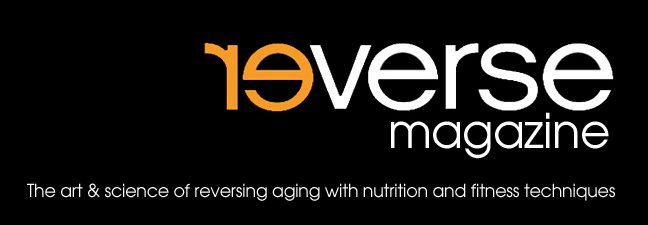The information that follows is from Eddie Kowacz. He is a former Marine, SWAT, and Corrections Officer. He is a martial arts veteran and experienced strength athlete. His view of Intermittent Fasting is very raw, vivid, and backed up by experience. He walks the talk.
Fasting and Feasting - The Way I Eat by Eddie Kowacz
"Most of the time (est. 90% ) I eat one meal a day and have been doing so for the last ten years. I never,ever,eat breakfast or lunch. I don't do this for any Athletic, Aesthetic, or Religious reason. I follow this "Way" because I enjoy it and it works. It makes me feel mentally in tune with my body and mind while providing a sense of alertness and well being that is almost unexplainable. I eat my dinner around 8 in the evening and the other 10% of the time I'll have a light snack around 10, just before I turn in.
Yes, you've read that right. It's almost a full 24 hours before I ingest any more calories. In the mornings and during the day the only liquids that I take in are black coffee and Poland Spring water. However, I do add a small amount of Crystal Light ( White Grape, only please!... this stuff rocks ) which adds a few trace calories. An average day has me taking in 2-3 large cups of coffee and 2 gallons of water. I never get hungry between feedings and never have any cravings. If I do it simply means that I didn't eat enough the day before. Following this regimen training is always done on an empty stomach. No pre workout meal nor post. ( The post workout meal timing "window effect" is a fallacy that was created by supplement companies in an effort for you to buy their precious Whey Protein Drinks ) IMO, It doesn't exist!!
Eating this way has enabled me to keep my weight between 170-180 for the past 5 years. Currently @175 as I type this. The purpose for staying at such a light weight for me is due to the fact that I have had 10 knee surgeries since 1985, with my last one being a partial plastic replacement. Less stress
Yes, you've read that right. It's almost a full 24 hours before I ingest any more calories. In the mornings and during the day the only liquids that I take in are black coffee and Poland Spring water. However, I do add a small amount of Crystal Light ( White Grape, only please!... this stuff rocks ) which adds a few trace calories. An average day has me taking in 2-3 large cups of coffee and 2 gallons of water. I never get hungry between feedings and never have any cravings. If I do it simply means that I didn't eat enough the day before. Following this regimen training is always done on an empty stomach. No pre workout meal nor post. ( The post workout meal timing "window effect" is a fallacy that was created by supplement companies in an effort for you to buy their precious Whey Protein Drinks ) IMO, It doesn't exist!!
Eating this way has enabled me to keep my weight between 170-180 for the past 5 years. Currently @175 as I type this. The purpose for staying at such a light weight for me is due to the fact that I have had 10 knee surgeries since 1985, with my last one being a partial plastic replacement. Less stress
(body weight) that's placed on the knee joint is a great thing, which in turn enables me to train as I wish in keeping with the high standards that I set for myself.
What I Eat: Very simple! I'm a Carnivore, that means meat-eater. For the last 4.5 years it's been a diet that consists of High Fat and Med Protein nutrients. Think Steak and Butter here! Most of the time the steak is grass fed tenderloin and grass fed butter. If I'm forced to eat meats that aren't grass fed
What I Eat: Very simple! I'm a Carnivore, that means meat-eater. For the last 4.5 years it's been a diet that consists of High Fat and Med Protein nutrients. Think Steak and Butter here! Most of the time the steak is grass fed tenderloin and grass fed butter. If I'm forced to eat meats that aren't grass fed
( which is rare ) it is rib-eye cuts with the rib roast being my favorite ( 1st cut ). The butter is always a grass fed variety. I have no problem eating the same thing day in and day out. I eat till I'm full as well. No cravings for any other types of food. Not even sugar or any other form of carbs. Last carb meal I had was Dec. 2005 at Moms house. It's been zero since. I don't drink either. Last drink that I had was in early Feb 1999. I have medical tests done at my Doc's office twice a year and it's always good to great. Oh Yeah, I do take a few multivitamin/ multiminerals.
Can I eat other foods "healthy" foods as I wish such as fruits and veggies? Sure! But why try to fix something that's not broken! I love eating this way, these foods, and MOST important it works for me. The body adapts, it becomes it's function.
Can I eat other foods "healthy" foods as I wish such as fruits and veggies? Sure! But why try to fix something that's not broken! I love eating this way, these foods, and MOST important it works for me. The body adapts, it becomes it's function.
I don't want to give the impression that my fasting method can't include other protein choices or even carbs. For example: Before I switched to meat only I went a few years fasting the same way and eating a combination of Chilean Sea Bass ( 1.5 lbs. daily ) and Buffalo Beef Patties w/Stir Fried Veggies. The Veggies were stir ... See Morefried in my Wok with Coconut Oil and they included Peppers, Vidalia Onions,and Mushrooms. When I got done frying this mix I would pour it over my cooked Buffalo patty. The Sea Bass was mostly eaten with sauteed red peppers. Of Course, the main fat source of any of these dishes was saturated fat. No Poly Oils.
This is my diet! I'm not selling this to anyone nor am I advocating that anyone try this. It's simply something that I do, and it works well for me."
This is my diet! I'm not selling this to anyone nor am I advocating that anyone try this. It's simply something that I do, and it works well for me."

















